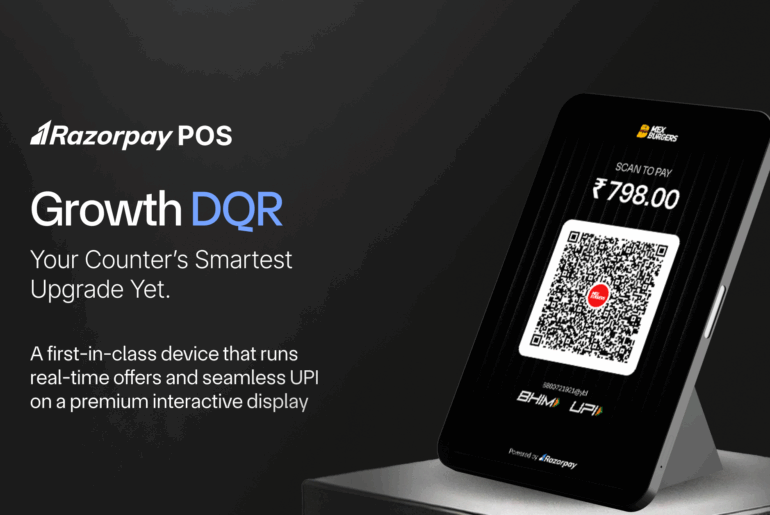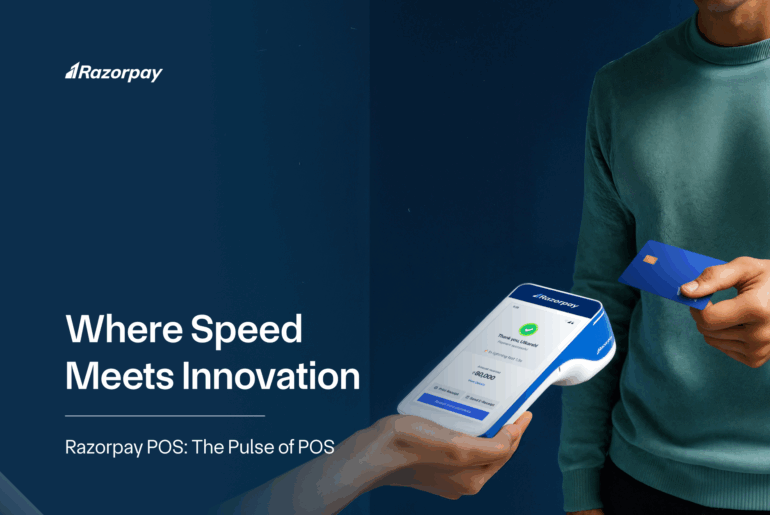In today’s digital age, in-store businesses rely heavily on Point of Sale (POS) data to understand customer behaviour, optimise operations, and drive growth. This article delves into what POS data is, its significance, the advantages it offers, and the challenges associated with managing it effectively.
Read About: Types of POS System for Your Businesses
Table of Contents
What is POS Data?
Point of Sale or POS data is a information collected when a customer makes a purchase at a store. POS data includes the customer’s details such as the name of the purchased product, payment method, time of purchase, location of the store, demographic information, and inventory data.
POS data includes various types of information, such as:
- Customer Informations: Buyer’s name, contact details, and loyalty program participation, if applicable.
- Customer Transaction Details: Date, time, and location of the sale, along with the specific items purchased.
- Product Data: SKU (Stock Keeping Unit) numbers, product descriptions, and quantities sold.
- Payment Data: Payment methods used for POS transactions, either debit or credit card, cash, UPI, QR Code and digital wallets.
Related Read: POS Machine Charges and Transaction Fees
Different Types of POS data
1. Product Data
- POS systems capture detailed information about each product sold, including its name, SKU (Stock Keeping Unit), barcode, price, quantity sold, and any applicable discounts.
- This product data is essential for accurate inventory forecasting and demand planning.
- By analysing this data, you can monitor current inventory levels precisely, identify top-selling items, and predict future demand.
- This helps you manage stock more effectively, reducing the risk of overstocking or stockouts.
2. Sales and Revenue Data
- POS system meticulously records all financial transactions, providing a comprehensive overview of your business’s performance.
- This includes total sales, revenue by product or category, gross profit margins, and GST rate tax calculations.
- These metrics are crucial for assessing financial health and making informed business decisions.
3. Transaction Data
- Each sale generates a wealth of transaction-specific information.
- This encompasses the total amount, payment method, transaction time, and refunds or exchanges.
- Transaction data helps you analyse sales patterns and improve customer service.
4. Payment Token Data
- To ensure security and compliance, POS systems store tokenised payment information.
- This includes the type of payment card used and the last four digits of the card number.
- This data not only aids in fraud prevention but also facilitates faster checkouts for returning customers, simplifying future transactions.
5. Customer Data
- When integrated with loyalty programmes, POS systems gather valuable customer insights. This includes purchase history, brand preferences, and average basket size.
- This data not only enables personalised marketing strategies but also enhances customer experiences, which is crucial for improving customer retention.
6. Location Data
- POS data provides granular location information, from the country and city to the specific checkout where the transaction occurred.
- This data is particularly useful for businesses with multiple outlets, helping to identify regional trends and optimise store performance.
- It can also aid in site selection for new outlets by revealing areas with high transaction volumes or specific customer preferences.
7. Time Data
Time-stamped transaction data reveals crucial purchasing patterns. You can analyse sales by hour, day, week, or season, allowing you to optimise staffing levels, stock management, and marketing campaigns based on peak shopping times.
8. Promotion Data
- POS systems track the effectiveness of in-store promotions, providing insights into customer uptake and impact on sales.
- This data helps you refine your promotional strategies and measure ROI for marketing initiatives.
9. Coupon Data
- By recording coupon usage, POS systems offer valuable insights into customer behaviour related to discounts.
- This data helps you assess the effectiveness of different coupon strategies and their impact on overall sales and customer loyalty.
Learn About: eCommerce POS integration for Online and Offline Sales
How is POS Data Collected? A Step-by-Step Guide
Here’s the step-by-step process of collecting POS data using POS system or machine.
STEP 1: POS Systems and Data Capture
- POS systems automatically collect and store transaction data during sales. This includes product information, customer details, payment methods, and timestamps.
- Data is typically captured at the moment of sale and stored in a centralised system for easy access and analysis.
STEP 2: Data Formats
- Point of sale data can be stored in various formats, including CSV, XML, and JSON. CSV files are commonly used for data handling and import/export processes.
- XML and JSON formats are often utilised to integrate POS data with web-based systems or APIs, allowing for more flexible data sharing and communication across platforms.
STEP 3: Manual Data Entry
- In some cases, manual data entry is required in POS systems, such as when inputting custom orders or correcting errors.
- While manual input allows for flexibility, it can also introduce errors and inconsistencies, affecting overall data accuracy.
STEP 4: Barcode and QR Code Scanning
- Barcode and QR code scanning technologies automate data capture by quickly recording product information during a transaction.
- These methods reduce human error, improve efficiency, and streamline checkout by ensuring accurate and rapid data entry.
STEP 5: Integration with Other Systems
- POS systems often integrate with other business tools, such as inventory management, customer relationship management (CRM), and payment solutions.
- These integrations allow POS data to be enriched with additional information from external sources, improving decision-making across departments.
STEP 6: Data Validation and Cleaning
- POS systems often incorporate data validation processes to ensure data accuracy, such as verifying that inputs follow the correct formats or are within expected ranges.
- Regular data cleaning helps maintain consistency by correcting errors, removing duplicates, and standardising entries across datasets.
Benefits of POS Data Analysis
1. Inventory Management
- POS data is crucial for optimizing stock levels by providing real-time sales tracking. It helps you manage inventory efficiently, reducing stockouts and overstock situations.
- Analyzing inventory data ensures the right products are available at the right time, improving inventory turnover and streamlining the supply chain.
2. Sales Performance Analysis
- Tracking sales trends through POS data allows you to identify top-selling products and measure the effectiveness of marketing campaigns.
- This insight is vital for refining your marketing strategies, maximizing revenue, and aligning your efforts with customer demand.
- It also aids in making informed business decisions and enhancing your marketing strategy.
3. Customer Behaviour Analysis
- Understanding customer preferences, buying habits, and patterns through POS data helps you tailor your offerings and create targeted promotions.
- This analysis improves customer retention and lifetime value by delivering personalized experiences and better managing customer relationships.
4. Pricing Optimisation
- POS data reveals price elasticity and the impact of price changes on demand. With this information, you can adjust pricing strategies to remain competitive while maximizing profitability.
- Data-driven pricing ensures responsiveness to market conditions and helps in making strategic business decisions.
5. Operational Efficiency
- By analyzing POS data, you can identify and address bottlenecks in the sales process, such as long checkout times or inefficient payment methods.
- This leads to a more efficient checkout process, reduced wait times, and improved overall customer satisfaction.
- Efficient operations also contribute to fewer errors and enhanced employee management.
7. Fraud Detection
- POS data management plays a critical role in detecting and preventing fraud.
- Monitoring transaction patterns and flagging unusual activities help safeguard revenue and maintain customer trust.
- Strong security measures are essential for protecting your business from fraudulent activities.
8. Improved Customer Experience
- Utilizing POS data to streamline operations and tailor offerings enhances the overall customer experience.
- Efficient checkout processes and personalized interactions contribute to higher customer satisfaction and loyalty.
Related Read: POP vs POS Explained
Challenges in POS Data Management
1. Data Quality Issues
- Poor data quality can arise from inaccuracies, incomplete entries, or inconsistent formats, leading to unreliable insights.
- These issues can distort analysis, resulting in flawed decision-making and missed opportunities.
- Ensuring high-quality data is essential for making informed business decisions.
2. Data Security and Privacy
- Securing POS system data is crucial with the increasing risk of data breaches. Businesses must protect customer information, such as payment details, from cyber threats.
- Failing to safeguard data can lead to legal consequences, loss of customer trust, and significant financial penalties.
3. Data Integration Challenges
- Integrating POS data with other systems, such as inventory management or CRM platforms, can be difficult.
- Incompatible formats, data silos, and system limitations may hinder the seamless flow of information, limiting a business’s ability to gain a holistic view of its operations.
4. Data Storage and Management
- Storing and managing large volumes of POS data can be resource-intensive, especially for businesses with high transaction volumes.
- Ensuring data is easily accessible, well-organised, and stored securely can be challenging, particularly as businesses scale.
5. Human Error
- Manual data entry and processing in POS systems are prone to human error, leading to accurate records and consistency.
- These mistakes can compromise the integrity of the data and affect business outcomes, making it vital to minimise manual intervention wherever possible.
Best Practices for Utilising POS Data
1. Data Cleaning and Preparation
- Accurate and consistent data is the foundation of effective analysis.
- Regularly cleaning and validating your POS system data eliminates errors, duplicates, and inconsistencies.
- Tools like Excel, SQL, or data preparation software can streamline this process, ensuring high-quality data for reliable insights.
2. Sales Performance Analysis
- POS data track sales trends and identify top-performing products.
- Analyse sales patterns across different periods, locations, and customer segments.
- Use this information to measure the effectiveness of marketing campaigns and adjust your strategies accordingly.
- Implement dashboards to visualise key performance indicators (KPIs) for quick insights.
3. Inventory Management
- Optimise your inventory levels by using POS data to forecast demand accurately.
- Analyse sales velocity to identify slow-moving items and prevent overstocking.
- Set up automated reorder points based on historical sales data to reduce stockouts.
- Use this data to negotiate better terms with suppliers and improve your supply chain efficiency.
4. Customer Behaviour Analysis
- Dive deep into customer purchasing patterns and preferences using POS data.
- Segment your customers based on their buying habits and develop targeted marketing strategies.
- Use loyalty programme data to identify your most valuable customers and create personalised offers to increase retention.
5. Employee Performance Metrics
- Utilise POS data to evaluate employee performance objectively.
- Track metrics such as average transaction value, items per transaction, and upselling success rates.
- Identify top performers and areas where additional training may be needed. Use these insights to develop targeted training programmes and incentive schemes.
6. Pricing Optimisation
- Analyse price elasticity using POS data to optimise your product pricing.
- Test different pricing strategies and monitor their impact on sales volume and overall revenue.
- Use this information to implement dynamic pricing models that maximise profitability while remaining competitive in the market.
7. Data Security and Privacy
- Protect sensitive customer data by implementing robust security measures.
- Ensure your POS system complies with industry standards such as PCI DSS.
- Regularly update your security protocols and train your staff on data protection best practices.
- Be transparent with customers about how their data is collected and used, and provide options for opting out of data collection where appropriate.
How Razorpay POS Helps Businesses to Get POS Data?
Razorpay POS offers a powerful POS machine that streamlines the process of collecting and managing point-of-sale data. It captures real-time transaction information, including customer details, product purchases, and payment methods. By integrating Razorpay POS with your business systems, you can get a comprehensive view of your operations. This data can be used to analyze sales trends, manage inventory effectively, and make informed decisions to enhance customer satisfaction and drive growth.
Explore: Razorpay POS Products and Features
FAQs
1. What is an example of POS data?
An example of POS data is the information collected during a transaction, such as the product name, price, payment method, and the time of purchase.
2. How is POS data collected?
POS data is collected through POS systems that record information during each transaction. Data capture can be automated through barcode scanning, card payments, and digital receipts or entered manually for custom orders.
3. How do I export data from POS?
You can export POS data through the reporting tools provided by your POS system. Most systems allow data export in CSV, Excel, or PDF formats, which can be used for further analysis in business intelligence tools or spreadsheets.
4. What is panel data vs POS data?
POS data is transactional data collected at the point of sale, focusing on real-time purchases. Panel data, on the other hand, is collected from a set of individuals or households over time, tracking their purchasing behaviour and preferences across multiple retailers and channels.


